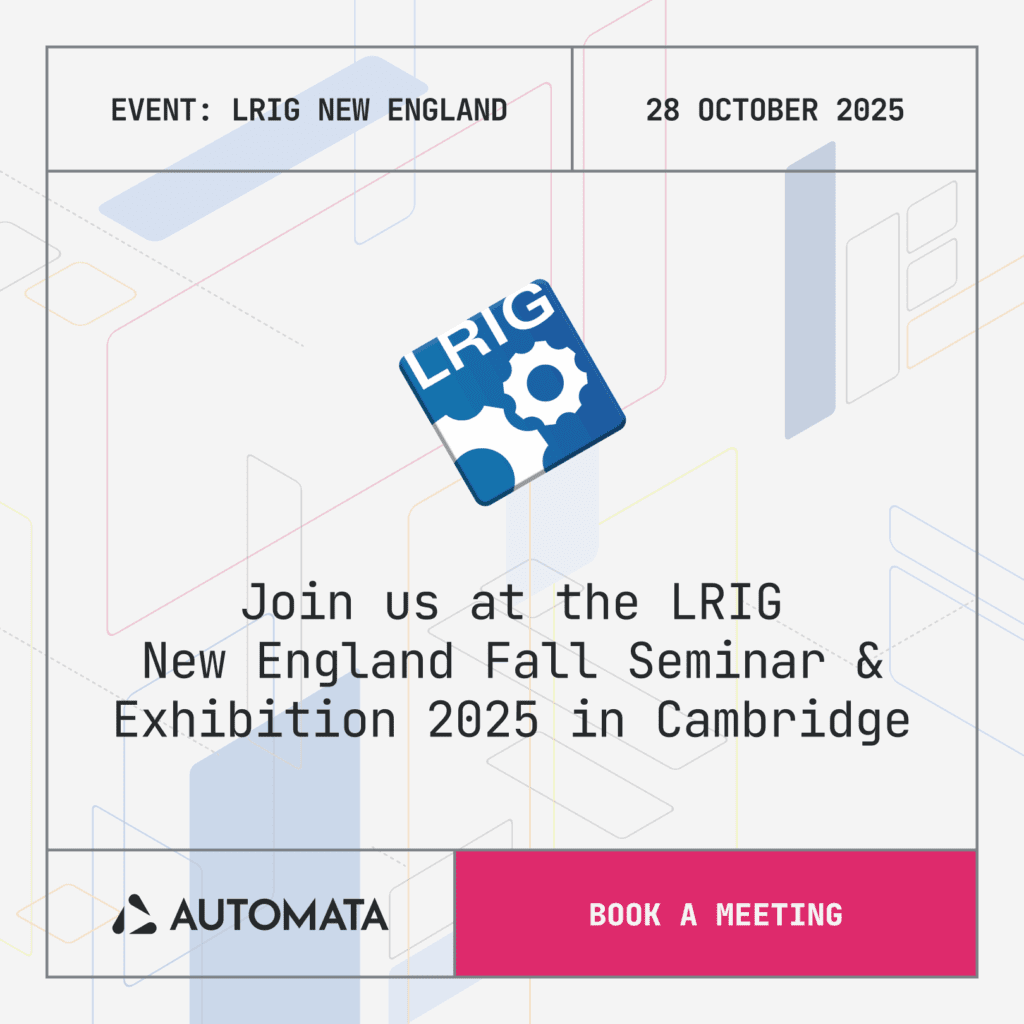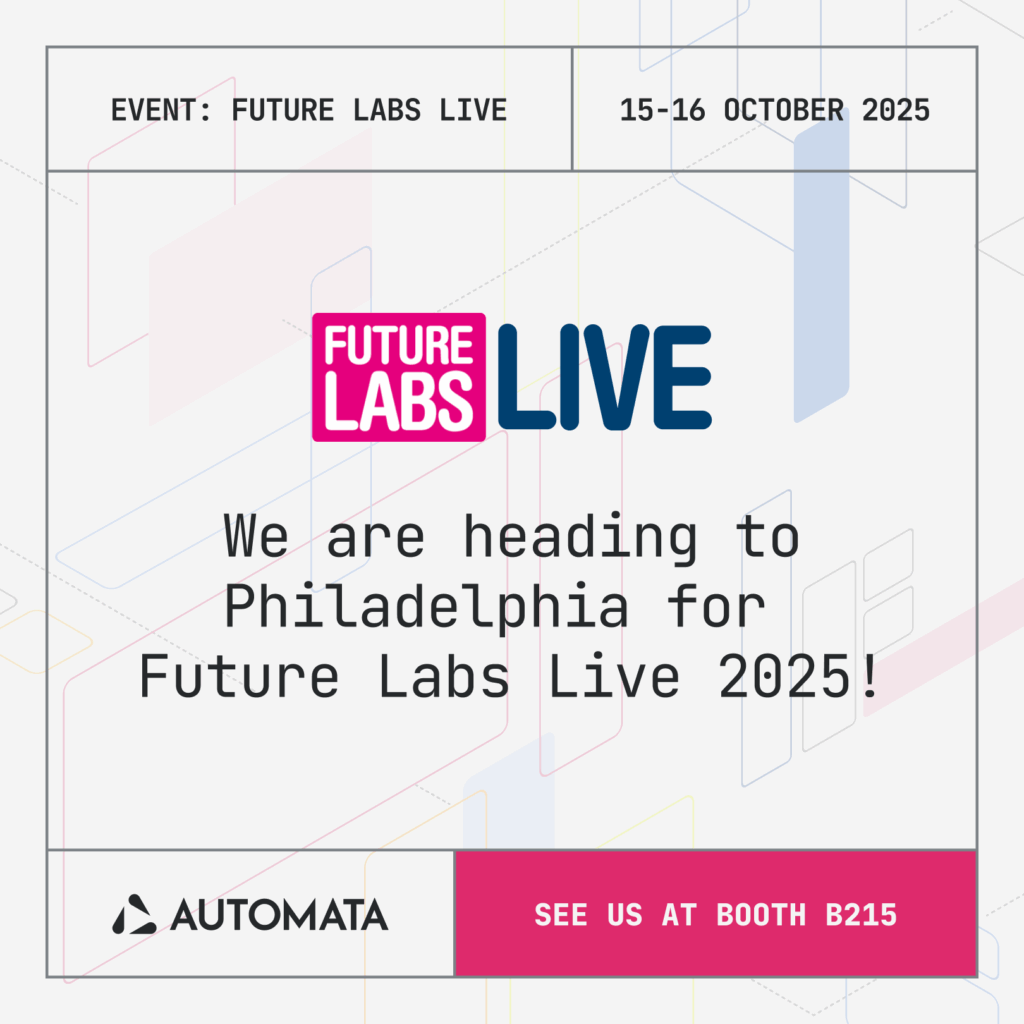
As first featured on labbulletin.com
Bridging the gap between laboratory scientists and designers
This article was first featured on labbulletin.com. Pantea Razzaghi, Head of Design at Automata explains why scientists are turning to robotics automation tools to ‘do more with less’ and make more effective use of space – increasing throughput and accuracy with the same lab footprint as before.
Laboratory design plays an important role in making lab spaces more accessible and efficient for scientists. This is vital as the UK strives to become a life science leader, of a sector aiming to increase productivity, have the flexibility to scale, and bring products to market at pace.
The UK has a finite amount of lab space available, and in fact, availability for lab space in the Oxford-Cambridge arc was close to zero earlier this year. This means that designing existing lab spaces to run more effectively is one of the only ways to increase life science output.
With this new mindset, scientists are turning to robotics automation tools to ‘do more with less’ and make more effective use of space – increasing throughput and accuracy with the same lab footprint as before.
However, there has often been a gap between the innovations that UX designers want to apply to the lab, and the way scientists like to work. This is for a number of reasons – from designers not always understanding the everyday needs of laboratory scientists, to scientists needing time to build trust with new and unfamiliar technologies.
With this in mind, there is still work to do to ensure that the scientists using these new tools, and the designers creating them, are aligned.
Design with user experience in mind
User experience must be at the heart of how designers develop tools for scientists. The focus should be on creating tools that allow them to work more efficiently in the lab, and save them from having to engage in multiple, repeated manual steps as part of everyday experiments. For example, with laboratory benches designed to automate workflows, it’s possible to reduce manual touchpoints from hundreds into single digits or increase the number of plates read from two hundred plates a week to two hundred a day.
To design in a way that will enhance the day-to-day experience for scientists, designers must interact closely with them and truly understand their needs. Scientists are the ones who know how the lab functions in practice, experience where bottlenecks exist and see where it is possible to optimise. By listening to this, designers can build the solutions that lab workers really need.
One significant pain point for lab scientists is around sample and plate number variability. Through understanding this, designers can design systems in a way that acknowledges there are day-to-day fluctuations in a lab, while also remaining simple and intuitive enough to reduce the chance for error. Another example is the validation process for workflows. If designers understand this process, they can design an experience that can effectively track and report on it.
Focus on education
When scientists are new to using automation in the lab, it’s a common misconception that they need a whole new set of skills to work with different technology. As a result, there can be a reluctance to move away from the status quo and embrace new technology – for fear that it will complicate existing workflows and even slow down research and discovery.
Part of the role of a designer is to overcome this, by teaching scientists to ‘think automated’ and embrace new ways of working. For example, helping to move away from the mindset of linear processes – where you might have to wait for a thermal cycler to finish before you can move onto the next step – towards the parallelisation of tasks with automation.
As a result, tasks can be completed faster, with higher levels of accuracy than is possible manually, whilst also giving scientists the time and headspace to work on more skilled tasks and research.
Build trust in technology
The unfamiliar can be scary and scientists understandably need time to build trust in new technologies they’re being asked to use. Moving away from the process and systems that have been familiar for a long time isn’t easy, but if designers can demonstrate the value that new technology brings, accepting and even embracing change is much easier.
At the same time, scientists today are already far more knowledgeable about software tools compared to a few years ago. For example, it’s common today for scientists to understand programming languages like Python, and science and engineering are coming together in areas like synthetic biology where an engineering-focused approach is used to build new life forms.
As a result, lab spaces are already changing and scientists are working with different tools than they did five, ten or twenty years ago – and designers should position automation tools as the next iteration of this ongoing advancement.
Products like an automated liquid handler or plate reader, all the way through to a fully automated workflow for a genomics or cell culture lab, can take away repetitive manual tasks from scientists and empower labs to do more with the same space. By showing scientists that these tools can play a powerful role in helping them to bring life-changing innovations to market, designers can build trust in new ways of working.
If the UK is to achieve the goal of becoming a life science superpower, embracing the benefits that automation can bring to the lab will be vital. Automation must be built into the design fabric of the lab and user experience designers, industrial designers, visual designers and user experience researchers are all already creating the tools to power more efficient and effective lab spaces – now, they must work closely with scientists to ensure these new technologies generate the benefits they promise.

Meet us at LRIG New England Fall Seminar & Exhibition 2025 Date:…
Read more LRIG New England Fall Seminar & Exhibition 2025
Meet us at Future Labs Live 2025 Date: October 21–22, 2025Location: The…
Read more ELRIG Drug Discovery 2025
Meet us at Future Labs Live 2025 Date: October 15–16, 2025Location: Pennsylvania…
Read more Future Labs Live USA 2025